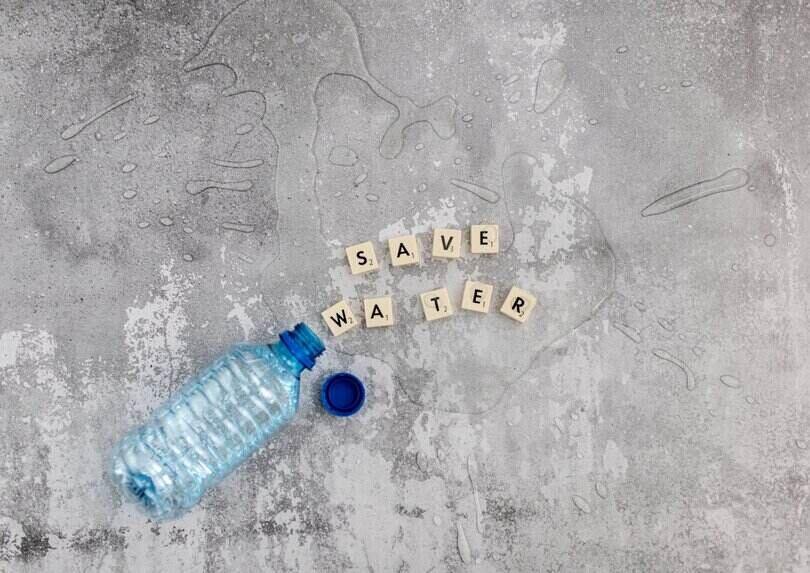In recent years, the average person’s eco footprint has increased. There are many reasons for this increase – from population growth to overconsumption. But there are things we can all do to help reduce our eco footprints and restore balance to the earth. Here are seven of the best ways to do it!
What makes up your eco footprint?
Your ecological footprint refers to how much resources you consume and waste you generate to support your way of life. To put it simply, your eco footprint is a measure of your impact on the planet.
The greenhouse gas emissions (GHG) from your daily activities make up the biggest part of your eco footprint. But it also includes the resources you consume, like water and food, and the waste you generate.
Why reduce your eco footprint?
There are many reasons to want to reduce your eco footprint. For one, it’s good for the planet. Reducing your impact can help slow down climate change, preserve biodiversity, and protect ecosystems. Let’s read some reasons in more detail.
Slow down climate change

When you reduce your eco footprint, you’re helping to slow down climate change. Climate change is a global problem, and we all have a role in combating it. Small actions can add up to make a big difference. The food waste you avoid, the energy you conserve, and the trees you plant all help to reduce greenhouse gas emissions and slow down climate change.
Preserve biodiversity
Biodiversity is important for the health of our planet. It helps ensure that ecosystems can function properly and helps provide us with food, clean water, and other resources. When we reduce our eco footprint, we help preserve biodiversity by ensuring less pollution and destruction of natural habitats. When the natural resources of an area are not stressed by human activity, the area can support a greater variety and abundance of plant and animal species.
Save you money
In the long run, living a more sustainable lifestyle will save you money. You’ll save on your energy bills by using less water and electricity. You can save on groceries by growing your food or shopping at farmer’s markets. And you can save on travel costs by choosing vacation destinations closer to home. The energy-efficient appliances and green building materials you use will also save you money over time.
Improve your health
Living a sustainable lifestyle can also improve your health. You’ll be exposed to fewer toxins and pollutants, and you’ll have more opportunities to get exercise. Eating a healthy diet of locally grown food can also reduce your risk of developing chronic diseases such as heart disease, stroke, and cancer. When the carbon dioxide we release into the atmosphere warms the planet, it also creates more extreme weather conditions. These can lead to health problems from heat and cold exposure and increased air pollution.
Connect you with nature

When you live a sustainable lifestyle, you’ll likely find yourself spending more time outdoors. This can help you feel more connected to nature and boost your mood and mental health. Being in nature has been linked with decreased anxiety and depression and increased self-esteem.
If you don’t have easy access to natural areas, you can bring nature into your home with houseplants. When the greenhouse gases you produce mix with the air outdoors, they can contribute to climate change. But when plants absorb these gases, they help improve air quality.
7 Effective ways to reduce eco-footprint
Now that you know some reasons to reduce your ecological footprint, here are seven ways you can do it:
1. Save energy at home
One of the simplest things you can do is switch to LED light bulbs. They use about 75% less energy than traditional incandescent bulbs and last up to 25 times longer. You can also save by unplugging electronics when you’re not using them since they still use a small amount of power when turned off.
Among the different ecological footprint measures, saving energy is often the most impactful. Your personal carbon footprint, for example, would be reduced by an estimated 1.5 metric tons of carbon dioxide if you switched to LED bulbs throughout your home.
2. Save water

Water is another resource we often take for granted, but it’s becoming increasingly scarce in many parts of the world. The average family uses 300 gallons of water daily, but there are easy ways to reduce that.
One way is to install low-flow fixtures, such as showerheads and toilets. You can also save water (and money) by watering your lawn and garden during the cooler hours of the day and using a rain barrel to collect water for irrigation.
Looking at the impact of your food choices on climate change is also important. For example, producing a pound of beef requires 2,400 gallons of water, whereas a pound of wheat requires only 180 gallons. The environmental impact of the water used to put food on your table is important to consider when trying to reduce your ecological footprint.
3. Use green power
If your utility offers a green power option, consider signing up for it. Green power is electricity from renewable sources like solar, wind, or hydropower. It doesn’t produce any air pollution and has a much lower carbon footprint than traditional forms of power generation.
When the carbon emissions from the power plant are considered, green power can be up to 99% cleaner than other options. Suppose you use about 10,000 kWh of electricity per year. Signing up for a green power option that costs an extra €5 per month will add about €60 to your annual electricity bill. But it will offset about 10,000 pounds of carbon dioxide emissions, equivalent to taking one car off the road for a year. Always purchase carbon offsets to account for your emissions.
4. Drive less
One of the best ways to reduce your eco footprint is to drive less. Do it if you can walk, ride a bike, or take public transportation instead of driving. Not only will you save money on gas, but you’ll also be doing your part to reduce air pollution and traffic congestion. If you must drive, try to carpool or use a more fuel-efficient vehicle.
Usually, the carbon offsets associated with driving are much higher than for flying, so driving less can make a big difference. According to many estimates, the average person emits about 1.9 tons of carbon dioxide from driving each year. If you can reduce your driving by 10%, you’ll offset about 200 pounds of carbon dioxide emissions.
5. Educate yourself and others about climate change
If you want to reduce your eco footprint, it’s important to educate yourself about the issue of climate change and what you can do to help. One of the best ways to do this is to read books, articles, and blogs about the topic.
You can also talk to your friends and family about what you’ve learned and encourage them to make some changes in their own lives. When the local farmer’s market is in season, buy some of your produce there instead of at the supermarket. You’ll reduce transportation emissions and get fresher, healthier food.
6. Compost your food waste
Composting is a great way to reduce your eco footprint because it helps to keep organic waste out of landfills. When organic material decomposes in a landfill, it produces methane, a greenhouse gas that contributes to climate change. But when you compost your food waste, it breaks down into a rich soil amendment that can be used to improve the quality of your garden. When recycled materials are used in agriculture, it reduces the need for chemical fertilisers, which can harm the environment.
7. Carbon/Neutral
Lastly, offsetting your carbon emissions is one of the best ways to reduce your environmental impact. Carbon offsetting is a way to compensate for the greenhouse gases that you produce by supporting projects that reduce emissions elsewhere. Carbon/Neutral offsets the GHG you produce by encouraging you to invest in renewable energy and other sustainability initiatives.
We provide a smart footprint estimation tool to calculate your emissions and offer a range of options to reduce or offset them. With our Personal Insights feature, you can see how your offsetting journey progresses and get tailored recommendations on what more you could do.
You can also explore different projects to take on and learn how they can positively impact the community and the environment.
Our carbon-offsetting projects are verified and certified by independent third parties, so you can be sure your money is going where it should. Carbon/Neutral also offers transparency on the cost of its offsets and how the carbon offset projects are funded, so you know exactly how your donations are spent.
So, what are you waiting for? Sign up with Carbon/Neutral and start reducing your environmental footprint!
